Description
The Bruni dragon fruit (Hylocereus stenopterus × Hylocereus undatus) is a hybrid variety developed by German hybridizer Eckhard Meier. It is one of three hybrid clones, alongside ‘Connie Mayer’ and ‘Kathie Van Arum’.
1. Basic Overview
- Variety Name: Bruni
- Species: Hylocereus stenopterus × Hylocereus undatus
- Origin: Created by renowned German hybridizer Eckhard Meier, Bruni is one of three hybrid clones, along with ‘Connie Mayer’ and ‘Kathie Van Arum’. This hybrid was developed to combine desirable traits like flavor, sweetness, and ornamental value.
- Significance: Bruni is highly regarded for its sweet, floral flavor and unique appearance, making it a popular choice for both home gardeners and collectors.
2. Visual Appeal
- Whole Fruit: The fruit is oval-shaped with green skin that develops a transparent pink hue when ripe, complemented by lemon-lime green fins, giving it a vibrant and exotic appearance.
- Cross-Section: Upon slicing, it reveals white flesh speckled with small black seeds, offering a striking contrast between the flesh and the skin.
- Flowers and Plant: The plant produces medium-sized blooms with inner petals that are purple shading to light pink edges and white tips, enhancing its ornamental value.
3. Physical Characteristics
- Skin Color and Texture: Green skin with a pink hue when ripe, adorned with lemon-lime green fins; the skin is smooth with tiny single thorns.
- Flesh Color: White.
- Fruit Size and Shape: Fruits are small, typically weighing between 0.25 to 0.75 pounds, and have an oval shape.
- Seed Distribution: Numerous small black seeds evenly distributed throughout the flesh.
4. Taste Profile
- Flavor Description: The flavor profile is described as a rosy floral taste, with notes reminiscent of mango and coconut, accompanied by a slight tartness.
- Sweetness Level: Brix ratings range from 18 to 22, indicating a high level of sweetness.
5. Growing Characteristics
- Climate Requirements: Thrives in warm, tropical, or subtropical climates; prefers temperatures between 65–85°F (18–29°C).
- Plant Type: A climbing cactus with tender, three-sided stems typical of Hylocereus species; spines are often tiny single thorns.
- Flowering Habits: Produces medium-sized blooms with inner petals being purple shading to light pink edges and white tips; flowers open at dusk and close at sunrise.
- Pollination: Self-sterile; requires cross-pollination with a different variety to set fruit.
- Growth Rate and Yield: Fast-growing with high yield potential; fruits are small and plentiful.
6. Cultivation Tips
- Soil Requirements: Prefers well-draining soil rich in organic matter; a pH range of 6.0–7.5 is ideal.
- Sunlight and Temperature Needs: Requires full sun to partial shade; protect from frost and extreme cold temperatures.
- Watering Needs: Regular watering is essential, especially during the growing season; however, avoid over-watering to prevent root rot.
- Support Structures: Provide sturdy support systems like trellises or stakes to accommodate the climbing nature of the plant and ensure proper growth.
7. Harvesting and Productivity
- Harvest Time: Fruits typically mature in about 45 days after flowering, which is longer compared to other Hylocereus species that take around 30 days.
- Fruit Yield per Plant: High yield potential with numerous small fruits per plant.
- Ripening Indicators: The fruit is ripe when the skin develops a transparent pink hue, and the fins turn lemon-lime green; it should give slightly when gently pressed.
8. Uses and Applications
- Culinary Uses: Excellent for fresh consumption, jams, garnishes, or as juice in drinks; its unique flavor enhances various culinary creations.
- Nutritional Benefits: Rich in antioxidants, vitamins, and fiber; contributes to overall health and wellness.
- Commercial Uses: Its unique flavor and appearance make it appealing for niche markets and specialty fruit production.
9. Fun Facts
- Unique Traits: Bruni is one of three hybrid clones created by German hybridizer Eckhard Meier, alongside ‘Connie Mayer’ and ‘Kathie Van Arum’.
- Flowering Time: The flowers open at dusk and close at sunrise, which is earlier compared to other varieties.
10. Comparison Chart
| Variety Name | Flesh Color | Skin Color | Average Weight | Brix Rating | Pollination |
| Bruni | White | Green with pink hue | 0.25–0.75 lbs | 18–22 | Self-sterile |
| Connie Mayer | White | Green with pink hue | 0.25–0.75 lbs | 18–22 | Self-sterile |
| Kathie Van Arum | White | Green with pink hue | 0.25–0.75 lbs | 18–22 | Self-sterile |
11. Frequently Asked Questions (FAQs)
- Is Bruni dragon fruit self-pollinating?
- No, Bruni is self-sterile and requires cross-pollination with another compatible variety to set fruit.
- How does Bruni differ from other varieties?
- Bruni is one of the three hybrid clones developed by Eckhard Meier, known for its rosy floral flavor and longer fruiting cycle compared to other Hylocereus varieties.
- What is the ideal growing environment for Bruni dragon fruit?
- Bruni thrives in warm, tropical or subtropical climates with well-drained, organic-rich soil and plenty of sunlight.
- How long does it take for Bruni to produce fruit?
- The plant typically begins fruiting within 2–3 years of planting, with fruits maturing around 45 days after flowering.
12. Reviews/Testimonials
- User Reviews:
- “Bruni dragon fruit is a favorite in my garden. The unique floral flavor and sweet white flesh are perfect for fresh eating and garnishes.”
- “It’s so rewarding to grow this variety. The combination of lime-green fins and pink skin makes it a standout!”
- Grower Testimonials:
- “Bruni is an exceptional variety for anyone seeking a unique hybrid with excellent flavor and ornamental blooms. It’s a reliable producer in warm climates.”
- “The sweetness and subtle floral notes make it a hit with customers at my farmer’s market. Highly recommend it for niche markets.”


Reviews
There are no reviews yet.